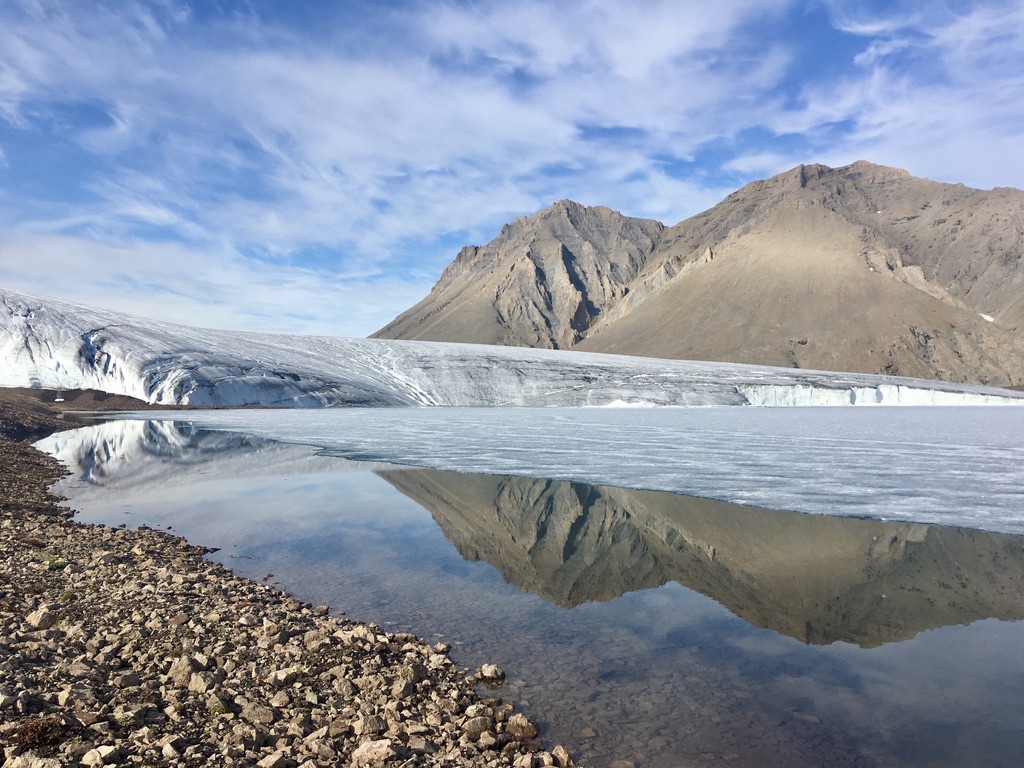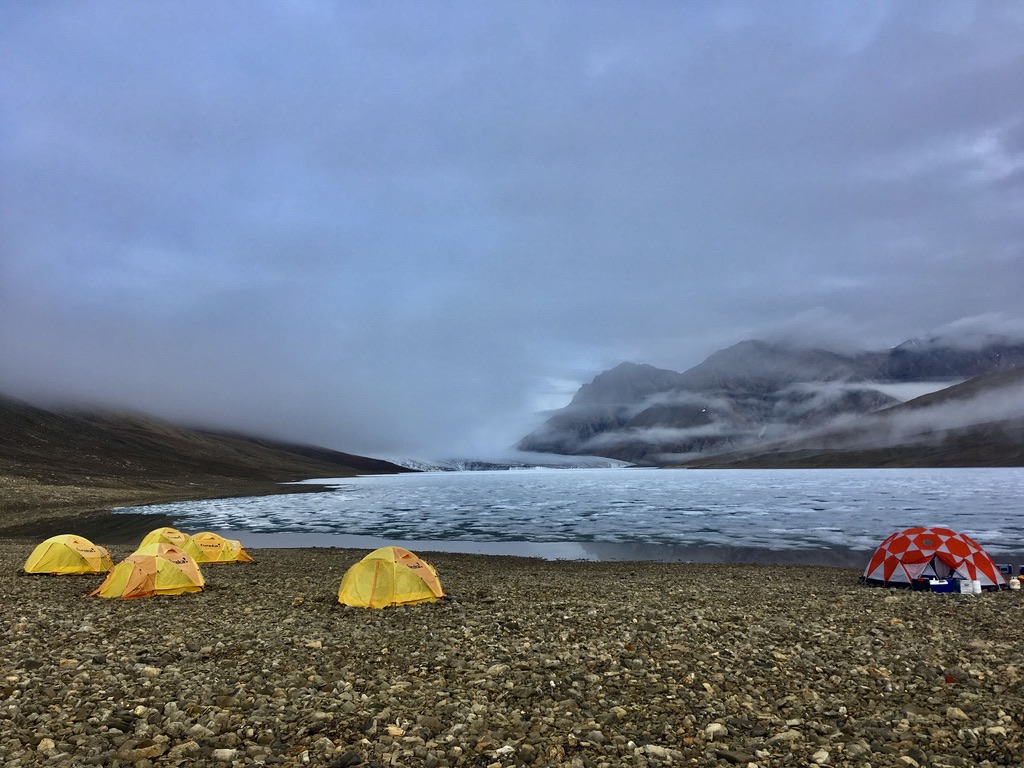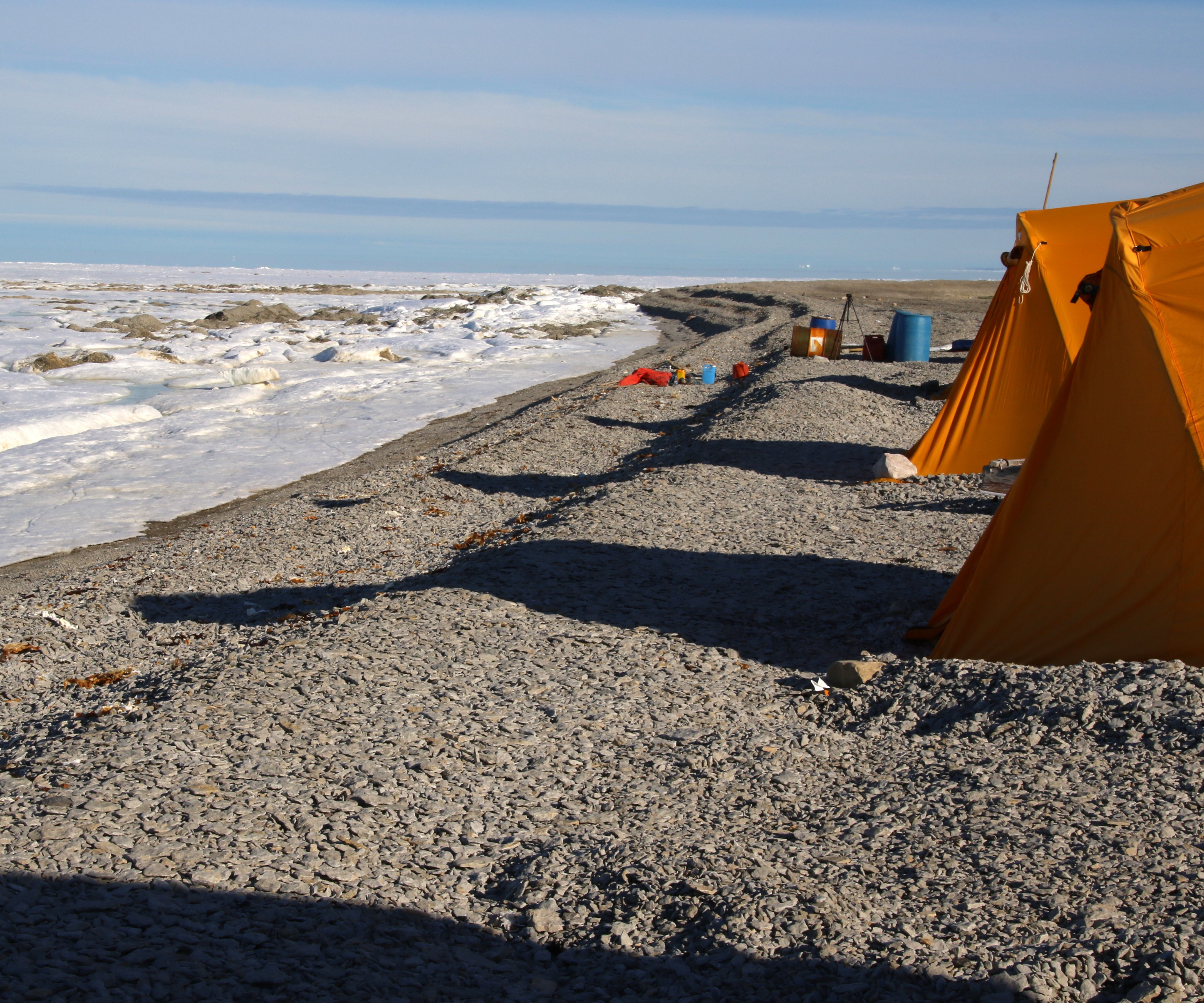NEW WAYS FORWARD IN CANADIAN ARCTIC RESEARCH
Catherine Girard, Mark Mallory and Warwick F. Vincent | January 12, 2021
Catherine Girard is a professor of microbiology at the Université du Québec à Chicoutimi, Québec
Mark Mallory is a professor of ecology at Acadia University in Wolfville, Nova Scotia
Warwick F. Vincent is a professor of biology at Université Laval, Québec


Credit for attached photograph: Catherine Girard, 2019. Environmental and microbial monitoring at Thores Lake and glacier on Northern Ellesmere Island.
In the early days of the COVID-19 pandemic, the Northern territories of Canada put in place strict travel restrictions to limit travel between the North and the South. A necessary measure, given the vulnerability of Northern communities to infectious diseases and respiratory illnesses. Indeed, in remote hamlets where access to health care is limited, and where overcrowding makes self-isolation extremely difficult, drastic measures were necessary to prevent the SARS-CoV-2 virus from reaching the North. This measure was very successful during the first wave of the pandemic, when there were few cases in the Yukon and Northwest Territories, and none in Nunavut.
The North’s lockdown also meant that Southern scientists had to skip their annual fieldwork in the Arctic, in many cases for the first time in their careers. This precious fieldwork season usually allows data collection, downloading of automated instruments such as climate stations, maintaining scientific infrastructure, and consultation and knowledge exchange with Northerners. Research programs entirely dependent on fieldwork came to a halt in 2020, graduate students’ programs were revised, and scientists had to find new ways of communicating with their collaborators in the North. The research community was (and continues to be) strongly supportive of these measures, as it recognized that this was the best way of supporting our Northern partners and preventing the spread of the disease in Arctic communities. Arctic scientists, like so many other work forces in these difficult times, have had to adapt.
However, while COVID-19 has dramatically transformed our world, the Arctic environment continues to change at a fast pace, as evidenced over the summer by the collapse of the Milne Ice Shelf, the last intact ice shelf of the Canadian Arctic. The International Panel on Climate Change’s latest report underlines ongoing observations of accelerated change in the Arctic, at greater rates than anywhere else on the globe. It is therefore necessary to find ways to continue Arctic research, and to collect valuable and informative data in the field that will help meet the knowledge needs for adaptation and sustainable development by Northern society, and for Canadian and global policy decisions.
Unprecedented international collaborative efforts have been made to fight the COVID-19 pandemic, leading to technological breakthroughs in vaccine development. In late 2020, the first doses of approved vaccines arrived in Canada, and Indigenous communities, as well as other vulnerable groups such as health care workers and seniors are being prioritized in early vaccination efforts. However, mass vaccination is still in the future, and researchers are already grappling with what the summer of 2021 may hold. Will fieldwork be possible? How can we ensure that data are collected, and that we move forward on climate and related research? These questions must be answered quickly, but do not solely rest on the research community: it is critical that these decisions be made along with our Northern counterparts.
Listening before going
Before Southern research teams undertake further field expeditions in the Arctic, it is important to establish an open dialogue between territorial governments, Indigenous leaders and scientists. This is also an opportunity for the Southern research community to examine our own practices, and to engage more effectively with our Northern partners. Research is steeped in a colonial past, and in the spirit of reconciliation, the first step to deciding how Southern scientists may return to the field in the Arctic should be for us to listen and discuss: Do Northerners feel ready for fieldwork to start up again? Have Southern scientists fully shared and explained the rationale and need for more studies? What do Northerners think visiting researchers should do to make communities feel safe about their passage?
Federal research organizations that are involved in Arctic research need to facilitate the dialogue between researchers and Indigenous leaders, to allow us to co-prepare clear, realistic and respectful guidelines on how fieldwork can resume in the North. The design of these practices should not rest on the needs and decisions of individuals or research groups, but should be systematic and representative of what Northern leaders support: an overarching structuring from federal and territorial organizations is of the utmost importance.
Improve testing
Any guidelines developed with respect to future fieldwork must include testing, as no research team wishes to become a vector of COVID-19, especially in a vulnerable region. New antigen-based technology, which is much faster than current PCR testing, has been approved by Health Canada so all members of each research field team can be tested multiple times before and during their travels in the North. This would curb the need for the 14-day isolation period that is required before entering the North. Researchers from the South will fully respect this requirement if it continues to be necessary, but it is an added prohibitive expense to already expensive field seasons. Negative tests would not eliminate the need for social distancing in the North but would greatly minimize the risk of research teams endangering communities, as well as demonstrate field parties’ commitment to safely visiting the territories.
Capacity building
While immunologists, microbiologists and epidemiologists rush to develop vaccines, treatments and testing methods, it is also important for Southern researchers to reflect on which projects actually require our presence in the Arctic. Capacity building has been a topic of conversation between Indigenous leaders and researchers for many years, but with limited outcomes. This pandemic is an opportunity to finally rise-up to the challenge of co-constructing research projects with our Northern partners and find ways to share leadership in research with Inuit communities. This is also a time to strengthen efforts to provide university-level education in the North, and to establish training partnerships with researchers and universities in the South.
We should also consider this crisis as an impetus to develop new ways of sharing our research and exchanging knowledge with Northerners. The entire world has moved to a virtual space and for Arctic research this could involve remote training for fieldwork techniques, teleconferences for discussions with Northern partners, as well as increased participation of Indigenous researchers in scientific conferences. The pandemic has forced expansion of online university courses to an unprecedented diversity of subjects, which is opening up opportunities for off-campus learning that were not available in the past. However, all these measures necessitate advocating for the availability of broadband Internet access in the Arctic. There is a clear divide in the accessibility to broadband in Northern areas, but Canada's new Connectivity Strategy aims to fix this connectivity gap. As a research community, we should support our Northern partners in this, while being mindful of the challenges they face in their communications until then.
Finding a way forward, together
The Southern research community faces many challenges to restart our fieldwork in the Arctic. However, this pandemic also offers us a unique opportunity to revisit how we collaborate with Northerners, and together work towards a better understanding of the changes occurring in the North. The recent explosion in the number of COVID-19 cases in Nunavut has shown the importance of lockdown measures, and the difficulty of preventing community transmission in the Arctic. Whatever path we take to move forward, researchers must work with all Northerners to innovate and find creative ways of safely monitoring the environment and co-producing new knowledge in the fast-changing Arctic.
Credit for attached photograph: Catherine Girard, 2019. Environmental and microbial monitoring at Thores Lake and glacier on Northern Ellesmere Island.
This article initially appeared in the Globe and Mail on January 12, 2021.



